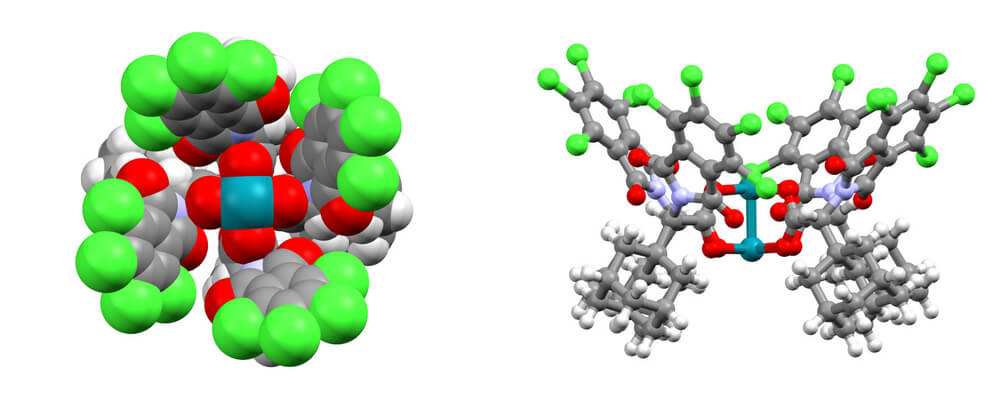Site-selective and stereoselective functionalization of non-activated tertiary C–H bonds
Kuangbiao Liao, Thomas C. Pickel, Vyacheslav Boyarskikh, John Bacsa, Djamaladdin G. Musaev and Huw M. L. Davies
Nature,
2017, 551, 609–613; DOI:10.1038/nature24641

11/2017
This collaborative report describes the design and application of a new catalyst capable of selecting tertiary C–H bonds in complex molecule structures.
In recent years, C-H bond functionalization, transforming C-H bonds to functional groups, has been demonstrated to represent a revolution in organic synthesis. However, the ubiquitous nature of C-H bonds in a typical organic molecule has brought a major challenge; how to differentiate one C-H bond from another.
The Davies group is interested in developing a catalyst toolbox, in which each catalyst has unique structural features that enable recognition between the subtle differences among C-H bonds, such that one specific C-H bond will be selected. Last year, this group reported a catalyst that can control the reaction to occur at the most accessible secondary C-H bond in an alkanes or terminally substituted alkyl compounds without the need of directing groups. In this report they demonstrats the catalyst control concept by expanding the toolbox to precisely reacting with the most accessible tertiary C–H bond. The selectivity is incredibly high, with, in most cases, only one C-H bond was functionalized even for the reactions where several natural products were modified.
